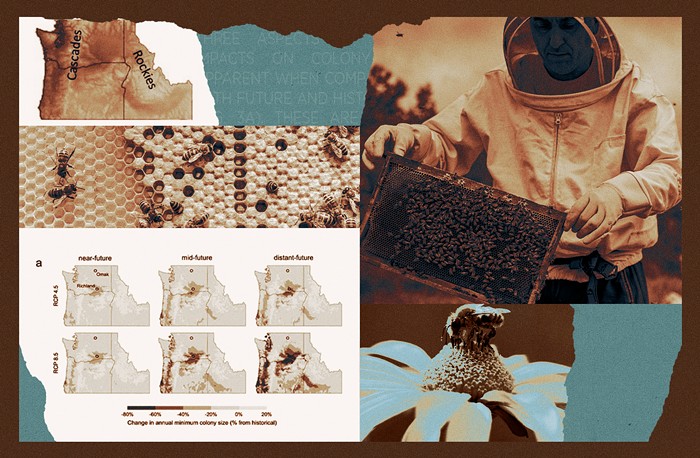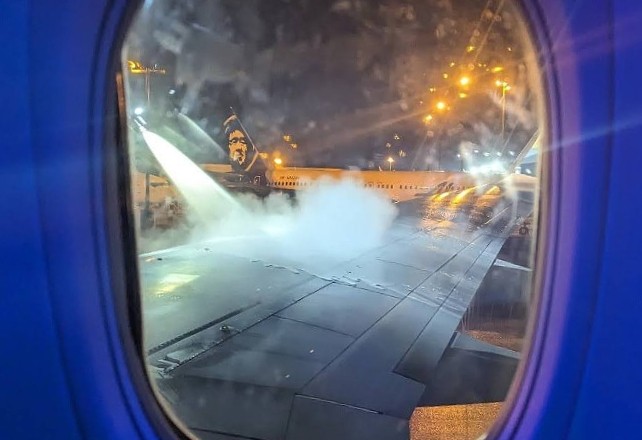
Anyone hiking near Mount St. Helens today may have felt a swarm of minor earthquakes that have recently rumbled the area. The largest of the quakes hit Tuesday night, a magnitude 3.9 tremor that was felt from as far north as Tacoma and as far south as Portland. It is the second largest earthquake to hit the area since 1981.
While earthquakes may be frightening, there is no reason to worry that the tremors near St. Helens are evidence that the Really Big One is on its way. That quake, which New Yorker writer Kathryn Schulz made famous in a Pulitzer-winning article, will spring from a fault line called the Cascadia Subduction Zone and it's predicted to decimate the region, including a massive tsunami that will hit the Oregon and Washington coasts. As a FEMA director so memorably told Schulz, the agency's "operating assumption is that everything west of Interstate 5 will be toast.”
Gladly, what's happening right now at Mount St. Helens is not that. Nor, according to Bill Steele of the Pacific Northwest Seismic Network, do we need to worry that these recent quakes are going to make the mountain blow. "Mount St. Helens is the most active volcano in the Cascades and will likely erupt again in the coming decades," Steele says, "but this is to the northeast of the mountain and it's not in the magmatic system that feeds the volcano."
In fact, Steele says, while this region is prone to earthquakes (the mountain ranges on both side of Seattle are evidence of that), "You are much more likely to be run over by a bus or hit by a driver playing Pokemon than to be killed by earthquake."
But that doesn't mean you should unpack your bug-out bag and flush your emergency water any time soon.
"Earthquakes in the U.S. produce very few deaths but they produce a tremendous amount of property damage and they really do disrupt infrastructure," Steele says. "The biggest threat [from the Cascadia quake] will be the tsunami on the coast, and that can't be belittled. Some people are not going to be able to get to high ground, and that's terrible."
Here in the Puget Sound area, the danger isn't a massive Deep Impact-style wave; rather, it's bricks. A recent survey by the City found that over 1,100 buildings in Seattle are constructed with unreinforced masonry (picture those old, multistory brick buildings you see all around town, many of them either historic or currently serving as low-income housing), and all of those are in serious danger of collapse if/when a major earthquake strikes. In August, a committee convened by the city recommended that earthquake-safe retrofitting be mandatory for all these vulnerable structures, but, as the committee noted, retrofitting is expected to cost upwards of $1 billion, which will largely fall on building owners—and, of course, their tenants. (For non-profit or publicly owned buildings, the committee recommends federal grants, tax credits, and, potentially, a voter-approved levy, among other funding sources.)
In Seattle, unless you live or work in a vulnerable building (and you can see a list of them here), Steele says you'll likely be fine when the Big One hits—at least, at first.
"In most neighborhoods, people's home are going to be ok," he says. "There's going to be things knocked around but if you've fastened them to the wall, if you've bolted your house to the foundation, you're going to ride through that earthquake." The problem, he adds, will be in the aftermath, when roads are impassible, utilities are knocked out, and all the grocery stores are closed. "Think of your neighborhood as an island," Steele says. "We need to be more self-sufficient and to get know our neighbors." And that, perhaps, is even more daunting than a mega quake: To survive the coming disaster, we're going to have to depend on each other to share.
















